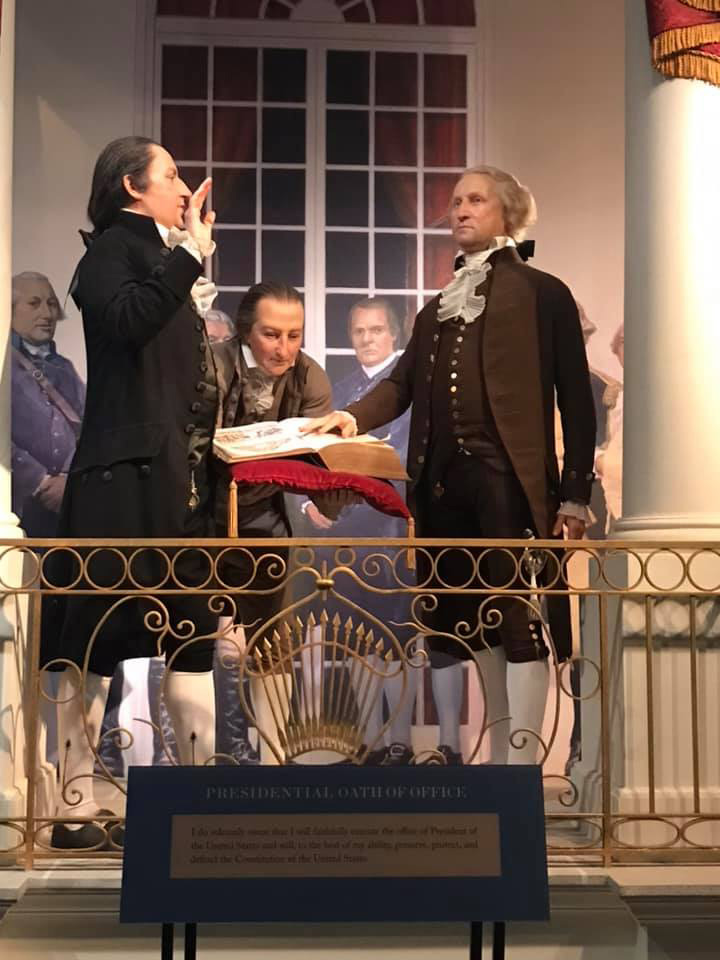
Washington’s Brown Suit
Federal Hall, New York City
Temporary Capital of the United States
April 30, 1789
George Washington laid his hand upon a large Bible, one that had been loaned for this purpose by a local organization of the Masons; he was sworn in as the first president of a new nation, prepared to defend its newly-written Constitution. While this event was noteworthy in a great many ways, one thing about it that was most significant was the brown wool suit that he wore, why he chose it, and where the material for the suit had come from.
A man’s clothing can send a variety of messages, and Washington was keenly aware of this. At the Second Continental Congress in 1775, he had worn the same colorful uniform that he had worn as a colonel in the Virginia Militia, a tacit offer to serve in the coming conflict with England. This was duly recognized by those around him: Accordingly, the congress appointed him Commander of the Continental Army.
At the inauguration fourteen years later Washington chose to wear the clothes not of a noble, nor of a soldier, but of a civilian. Washington had hoped that this outfit would send another message: that political independence from Great Britain would mean little to Americans if they continued to rely on foreign countries for the majority of the goods that they used, including fabrics.
Now, it was clearly understood by those of Washington’s generation that Great Britain had deliberately suppressed manufacturing in its colonies to keep them dependent upon British firms for their supplies: clothing, machinery, even glass. What products were sent to the former colonies were typically over-priced and of lesser quality. Naturally, this had left many colonists in a position of chronic debt to foreign suppliers.
With the outbreak of the Revolution, the powerful British navy shut down most American trade with Europe. This made it necessary for the rebellious colonists to produce their own homespun fabrics and fashion them into clothing and blankets—something that many households had been doing for their own use for some time—but this time they were completely on their own with no alternatives.
At the end of the hostilities with England, trade with Europe resumed, but George Washington understood the continuing need for America to become self-sufficient.
Connecticut, arguably more than any other state, had provided the resources necessary for the newborn nation to win and defend its independence from England, earning it the nickname, “The Provision State.” Washington therefore sought and found a Hartford company which produced “superfine broadcloths of excellent quality.” He subsequently purchased and received a sufficient quantity of a brown wool fabric of higher quality than he had dared hope. This material was then made up into a suit, with handsome buttons stamped with eagles.
And so it was with the help of the Hartford Woolen Manufactory, when George Washington took his oath of office as president, he wore a suit that not only declared the supremacy of civilian authority in a democracy but also endorsed and encouraged American-made products.
This core principle of made-in-America goods is as critically important today as it was in Washington’s day—a day when Connecticut pursued and fulfilled its destiny to produce everything from hats to carriages to guns to clocks to swords. And of course, fabrics.
-Adapted from the book, “It Happened in Connecticut,” by Diana Ross McCain.